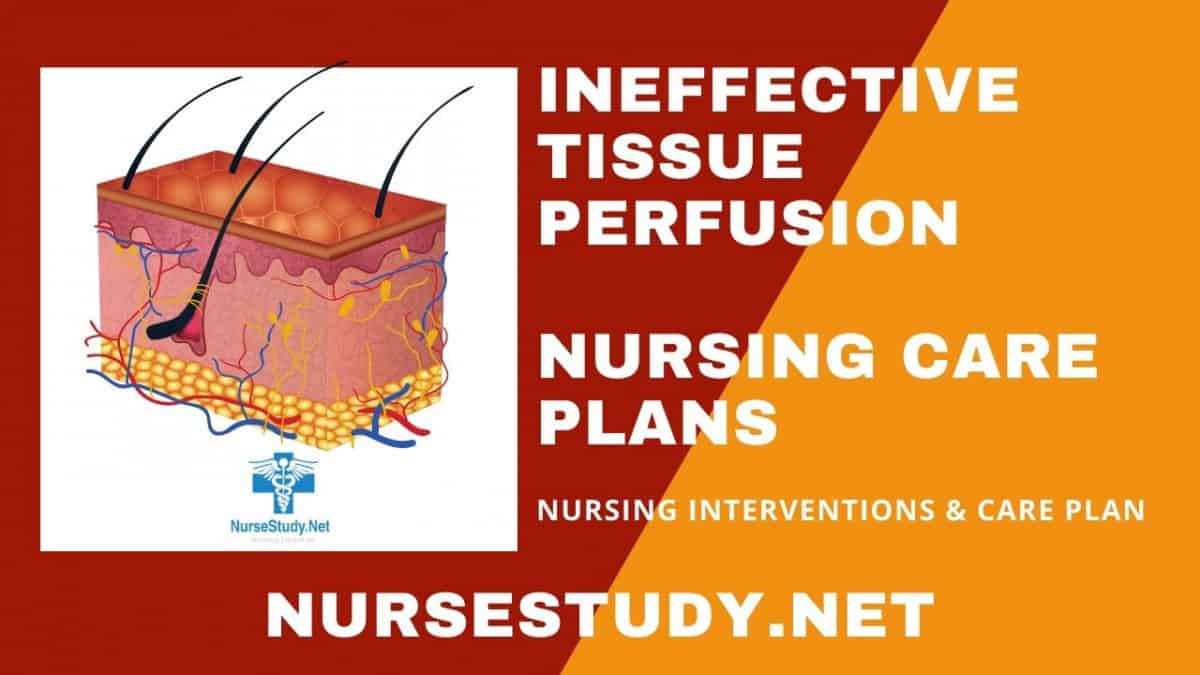Ineffective tissue perfusion occurs when there is insufficient oxygen delivery to body tissues at the cellular level. This condition can affect various body systems and may lead to severe complications if not properly managed. Understanding tissue perfusion is crucial for delivering effective patient care and preventing adverse outcomes.
Related Factors and Risk Factors
Common causes of ineffective tissue perfusion include:
- Cardiovascular disorders (heart failure, myocardial infarction)
- Respiratory conditions (COPD, pulmonary embolism)
- Hematologic disorders (anemia, sickle cell disease)
- Endocrine disorders (diabetes mellitus)
- Trauma or injury
- Sepsis
- Fluid volume imbalances
- Medications affecting blood flow
- Vascular disorders
Clinical Manifestations
Cardiovascular Manifestations
- Abnormal heart rates and rhythms
- Changes in blood pressure
- Delayed capillary refill (>3 seconds)
- Chest pain or discomfort
- Weak or absent peripheral pulses
- Cyanosis
Respiratory Manifestations
- Dyspnea
- Tachypnea or bradypnea
- Use of accessory muscles
- Abnormal breath sounds
- Decreased oxygen saturation
- Changes in arterial blood gases
Neurological Manifestations
- Altered mental status
- Changes in the level of consciousness
- Speech disturbances
- Motor weakness
- Sensory changes
- Pupillary response abnormalities
Peripheral Manifestations
- Cool extremities
- Skin color changes
- Delayed wound healing
- Diminished peripheral pulses
- Edema
- Hair loss on extremities
- Skin breakdown
Nursing Assessment
Primary Assessment
Vital Signs Monitoring
- Blood pressure trends
- Heart rate and rhythm
- Respiratory rate and pattern
- Temperature
- Oxygen saturation
Physical Examination
- Skin color and temperature
- Capillary refill time
- Peripheral pulses
- Level of consciousness
- Neurological status
Laboratory Values
- Complete blood count
- Arterial blood gases
- Coagulation studies
- Basic metabolic panel
- Cardiac markers
Nursing Care Plans
Nursing Care Plan 1: Cardiac-Related Tissue Perfusion Deficit
Nursing Diagnosis Statement:
Ineffective tissue perfusion related to decreased cardiac output secondary to acute myocardial infarction
Related Factors/Causes:
- Myocardial damage
- Coronary artery occlusion
- Reduced stroke volume
- Compromised contractility
Nursing Interventions and Rationales:
- Monitor vital signs q15min or as ordered
Rationale: Early detection of hemodynamic instability - Assess chest pain characteristics
Rationale: Evaluate ongoing ischemia and the effectiveness of interventions - Administer prescribed medications
Rationale: Improve coronary perfusion and reduce the workload on the heart - Position patient for optimal comfort
Rationale: Reduce oxygen demand and cardiac workload
Desired Outcomes:
- Stable vital signs within normal parameters
- Reduced chest pain
- Improved cardiac output
- Normal skin color and temperature
Nursing Care Plan 2: Cerebral Perfusion Deficit
Nursing Diagnosis Statement:
Ineffective tissue perfusion related to altered cerebral blood flow secondary to ischemic stroke
Related Factors/Causes:
- Cerebral vessel occlusion
- Thrombosis
- Embolism
- Increased intracranial pressure
Nursing Interventions and Rationales:
- Perform neurological checks q1h
Rationale: Monitor for changes in condition - Maintain head elevation at 30 degrees
Rationale: Promote venous drainage and reduce ICP - Monitor oxygen saturation
Rationale: Ensure adequate oxygenation to brain tissue - Implement swallowing precautions
Rationale: Prevent aspiration
Desired Outcomes:
- Improved level of consciousness
- Stable neurological status
- Maintained airway patency
- Adequate cerebral perfusion
Nursing Care Plan 3: Peripheral Perfusion Deficit
Nursing Diagnosis Statement:
Ineffective tissue perfusion related to peripheral vascular disease secondary to diabetes mellitus
Related Factors/Causes:
- Arterial insufficiency
- Diabetic neuropathy
- Microvascular changes
- Atherosclerosis
Nursing Interventions and Rationales:
- Assess peripheral pulses q4h
Rationale: Monitor circulation status - Implement position changes q2h
Rationale: Prevent pressure injuries - Maintain skin integrity
Rationale: Prevent tissue breakdown - Monitor blood glucose levels
Rationale: Maintain glycemic control
Desired Outcomes:
- Improved peripheral circulation
- Intact skin integrity
- Adequate sensation
- Controlled blood glucose levels
Nursing Care Plan 4: Renal Perfusion Deficit
Nursing Diagnosis Statement:
Ineffective tissue perfusion related to decreased renal blood flow secondary to hypovolemic shock
Related Factors/Causes:
- Fluid volume deficit
- Hypotension
- Decreased cardiac output
- Vasoconstriction
Nursing Interventions and Rationales:
- Monitor fluid balance
Rationale: Assess fluid status and replacement needs - Track urine output hourly
Rationale: Evaluate renal function - Administer prescribed fluids
Rationale: Restore adequate circulation - Monitor electrolytes
Rationale: Detect imbalances
Desired Outcomes:
- Adequate urine output
- Balanced electrolytes
- Stable blood pressure
- Improved renal function
Nursing Care Plan 5: Gastrointestinal Perfusion Deficit
Nursing Diagnosis Statement:
Ineffective tissue perfusion related to mesenteric ischemia secondary to atherosclerosis
Related Factors/Causes:
- Vascular occlusion
- Decreased blood flow
- Atherosclerotic disease
- Thromboembolism
Nursing Interventions and Rationales:
- Assess abdominal pain
Rationale: Monitor for changes in condition - Monitor bowel sounds
Rationale: Evaluate GI function - Track intake and output
Rationale: Monitor fluid balance - Implement bowel rest as ordered
Rationale: Reduce metabolic demands
Desired Outcomes:
- Reduced abdominal pain
- Normal bowel sounds
- Adequate perfusion
- Improved nutritional status
Prevention Strategies
Risk Factor Modification
- Smoking cessation
- Blood pressure control
- Diabetes management
- Weight management
Lifestyle Modifications
- Regular exercise
- Proper nutrition
- Stress management
- Adequate hydration
Medication Compliance
- Anticoagulation therapy
- Blood pressure medications
- Diabetes medications
- Pain management
References
- American Heart Association. (2023). Guidelines for the Management of Patients With Acute Coronary Syndromes. Circulation, 147(5), e25-e151.
- Journal of Nursing Research. (2023). Evidence-Based Nursing Interventions for Tissue Perfusion Management. Journal of Nursing Research, 31(2), 45-62.
- Critical Care Nursing Quarterly. (2023). Advanced Assessment Techniques in Critical Care: Focus on Tissue Perfusion. Critical Care Nursing Quarterly, 46(1), 1-15.
- Journal of Vascular Nursing. (2023). Current Concepts in Peripheral Vascular Disease Management. Journal of Vascular Nursing, 41(2), 77-89.
- American Journal of Critical Care. (2023). Nursing Management of Altered Tissue Perfusion in Critical Care Settings. American Journal of Critical Care, 32(3), 200-215.
- Nursing Research and Practice. (2023). Implementation of Evidence-Based Protocols for Tissue Perfusion Management. Nursing Research and Practice, 2023, 1-12.
